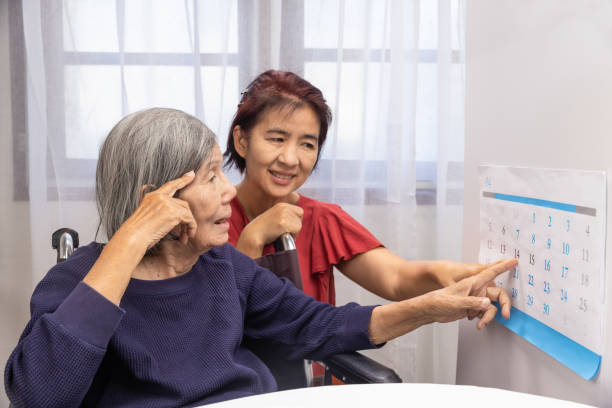As we age, our bodies undergo various changes, which can also affect our ability to speak and communicate effectively. These speech issues in the elderly can range from mild difficulties with articulation to significant disorders caused by neurological conditions. Understanding these challenges is the first step toward finding appropriate methods of support and treatment.
This article seeks to delve deeper into the various speech issues that elderly individuals may encounter, exploring their causes, effects, and potential solutions.
Contents
Common Speech Disorders in the Elderly
We’ll be taking a detailed look at some of the most common speech disorders affecting the elderly population. From dysarthria, characterized by slow or slurred speech, to spastic dysphonia, a condition that can cause a tight or strained voice, these issues are often a significant cause of frustration and isolation for seniors. Read on to gain an understanding of these disorders, their root causes, and possible therapies.
Dysarthria
Dysarthria is a motor speech disorder that can affect the elderly. It’s often caused by neurological conditions such as stroke, Parkinson’s disease, or multiple sclerosis. This disorder manifests as slurred or slow speech that can be difficult to understand.
Presbyphonia
Presbyphonia, also known as “aging voice,” is a condition marked by changes in pitch, loudness, and quality of the voice due to aging. It’s often characterized by a weak, breathy, or “rough” voice. Though not a disease, it can significantly impact an elderly person’s ability to communicate effectively.
Aphasia
Aphasia is a disorder that takes a toll on one’s ability to communicate. It’s usually caused by stroke or brain damage and may hinder an individual’s ability to speak, write, and understand verbal and written language. Aphasia can be quite frustrating as it affects expressive and receptive communication skills.
Apraxia of Speech
Apraxia of speech is a motor speech disorder where the signals from the brain to the mouth are disrupted, causing difficulty in moving the muscles needed to form words. In the elderly, it often results from stroke or progressive neurological disorders.
Spasmodic Dysphonia
Spasmodic dysphonia is a neurological disorder affecting the voice muscles in the larynx. It leads to involuntary movements of the vocal cords, making the voice sound tight, quivery, or hoarse. This disorder can significantly hamper verbal communication in seniors.
Cognitive-Communication Disorders
Cognitive communication disorders are characterized by difficulties in communication abilities directly related to five cognitive domains: attention, perception, memory, organization, and problem-solving. Often seen in dementia patients, these disorders can affect an individual’s ability to stay on topic, remember words, understand others’ conversations, or follow directions.
Addressing Speech Issues in the Elderly

Addressing speech issues in the elderly effectively requires a comprehensive understanding of the underlying causes and establishing a supportive environment that encourages communication.
In this section, we’ll explore various intervention strategies and therapies that can be used to manage and improve speech disorders prevalent in older adults. These strategies aim to enhance the quality of life by promoting effective communication, thereby reducing feelings of isolation and improving overall mental well-being.
Speech Therapy
One common intervention for speech issues in the elderly is speech therapy. Trained speech pathologists can provide exercises and techniques to improve articulation and clarity of speech, making it easier for seniors to express themselves and be understood.
Physical Therapy
Physical therapy may also be beneficial, particularly for speech issues caused by muscular weakness or coordination problems. This can include exercises to strengthen the muscles used in speech, improve breath control, and enhance overall stamina.
Medications
In some cases, medication may be used to manage symptoms of speech disorders. For example, medications to control muscle spasms or tremors may help with conditions like spasmodic dysphonia or dysarthria. Always consult a healthcare provider for appropriate treatments.
Assistive Devices
Assistive communication devices can provide valuable support for those with severe speech disorders. These can range from simple letter boards to more advanced electronic devices that can synthesize speech from text or symbols.
Emotional and Psychological Support
Finally, addressing the emotional and psychological impact of speech disorders is a crucial aspect of treatment. Counseling or support groups can provide a safe space for individuals to share their experiences, learn coping strategies, and build a community of understanding and acceptance.
Conclusion
Speech disorders in the elderly are multifaceted issues that require a comprehensive approach for effective management. A combination of speech and physical therapy, medication, assistive devices, and emotional support can drastically enhance the quality of communication for seniors dealing with these challenges.
It’s crucial to foster a supportive environment promoting understanding and acceptance, helping to alleviate the frustration often associated with speech disorders. This way, we contribute to an improved quality of life for our aging population, ensuring their voice continues to be heard.
